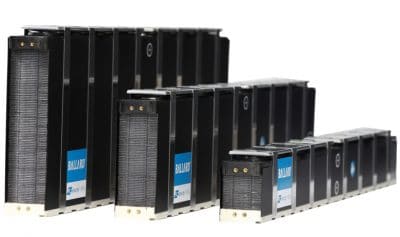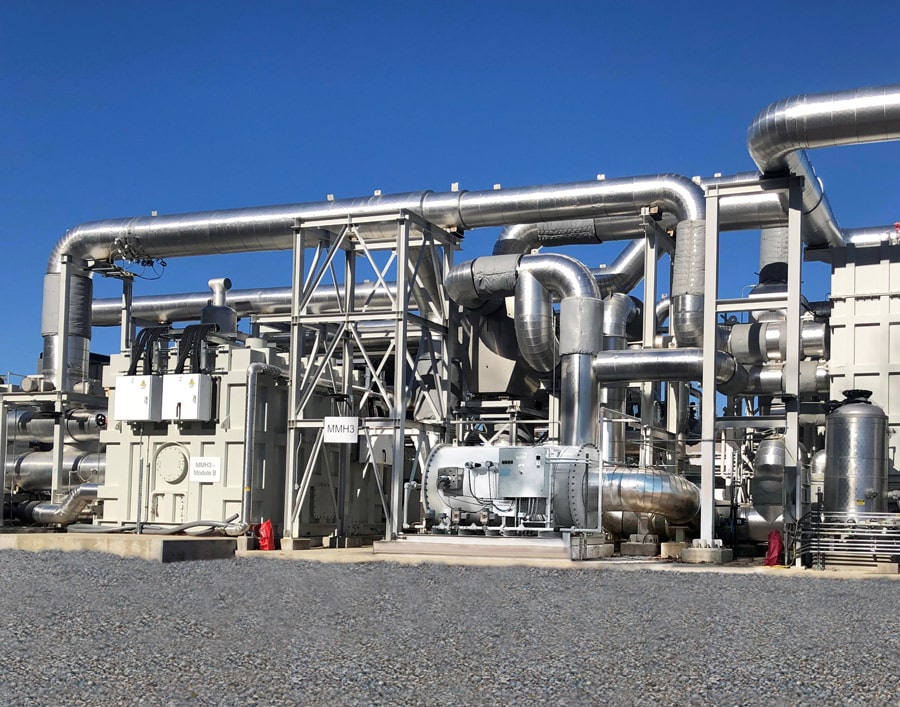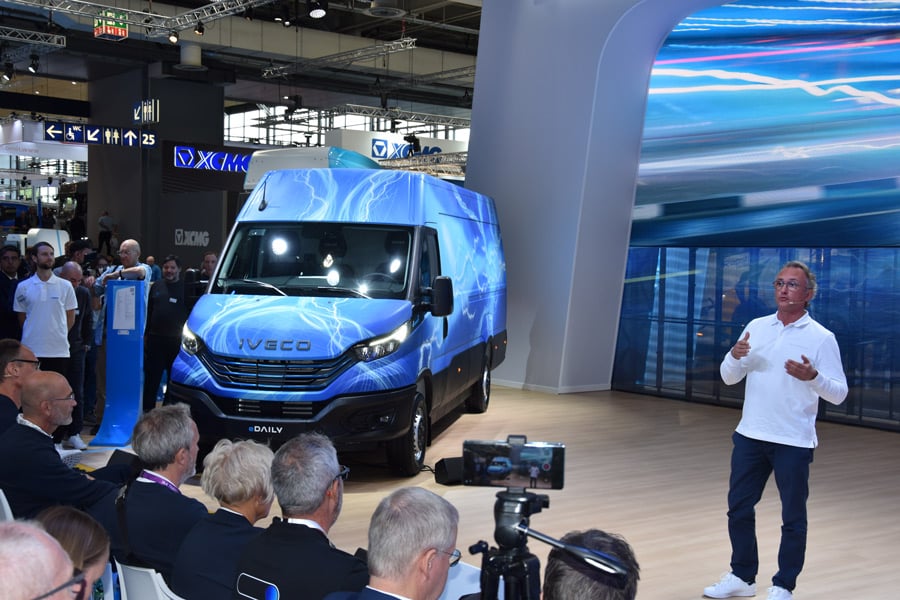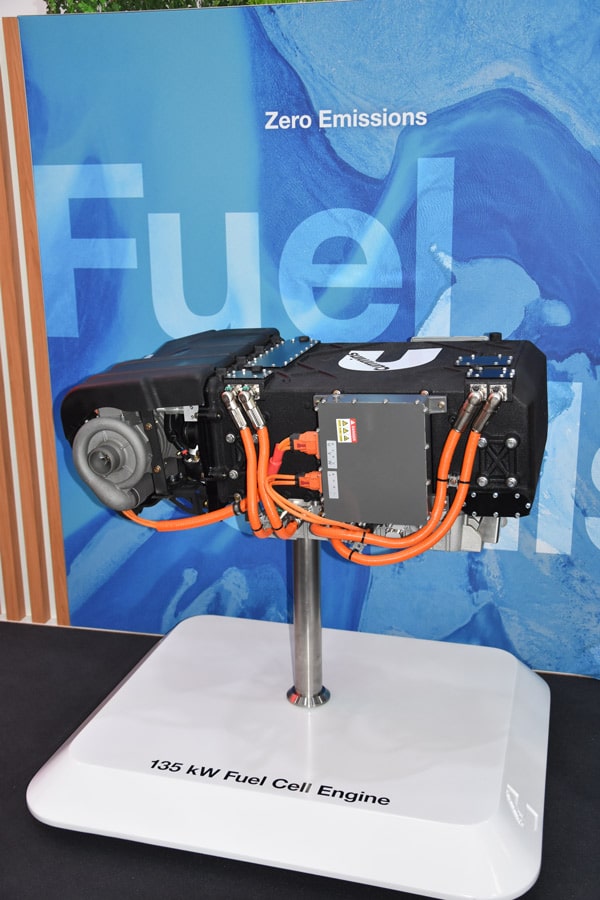Even Ballard’s chief executive, Randall MacEwen, has been heard using the word “megatrend” to describe the future of the fuel cell market. The industry is benefitting from the technological readiness of multiple fuel cell products and bringing them to market will only be a matter of time. The driver of growth at Ballard is a broad portfolio of prototypes and partnerships. A recent example is the collaboration with Scotland-based Ferguson Marine for building a car and passenger ferry powered by fuel cells and hydrogen.
Seen in this context, quarterly figures are hardly meaningful indicators. Ballard is constantly pumping funds into research and development projects. It is not only holding but expanding its lead in the market. The reduction in cash reserves, from more than USD 68 million to USD 35 million, is the result of a rise in inventory to meet fast-growing demand. This seems like a prudent strategy, considering backlog topped USD 283 million.
As it stands, Ballard is on track to assume the leading position in several fuel cell markets. Worldwide, a rising number of buses are being equipped with the company’s stacks. Daimler, too, regards the fuel cell as an ideal complement to the batteries that are to drive its soon-to-be-available electric buses, above all to extend their range.
Smaller orders are gradually turning into large ones, since a series of tests has been wildly successful. In El Paso, Texas, buses powered by Ballard fuel cells ran for 16 hours on 5 days a week, and 30,000 hours in total. You can hardly wish for more. In California, the state government pays a grant of USD 300,000 per vehicle. Even without incentives, fuel cell buses have become less expensive due to advances in technology and improved electrolysis has made renewable hydrogen production as efficient as never before. Three years ago, a fuel cell bus cost between USD 850,000 and USD 1 million. Meanwhile, prices have tumbled to about USD 650,000 and could soon approach USD 450,000.
The very limited hydrogen infrastructure is being expanded at a steady pace. It could, if the number of fuel cell vehicles reaches a tipping point, experience a rapid buildup and solve the chicken-and-egg dilemma, which fuel cell opponents, specifically battery fans, are never getting tired of mentioning. As said, it will only be a matter of time.
AFCC, a research partnership of Daimler and Ford, has been wound up. Ballard sold its stake to Ford years ago but stayed on as a strategic partner. AFCC basically sub-rented about 11,000 square feet (1,000 square meters) at Ballard’s headquarters in Vancouver, Canada. Ballard has gained a great deal from Daimler and Ford parting ways in fuel cell research. When the collaboration came to a close, it paid as little as CAD 6 million, or USD 4.6 million, for vital test and production equipment, so it can make twice as many membrane electrode assemblies. The exit by Daimler is also putting some distance between the two businesses. As a large bus manufacturer, the automaker is essentially a competitor, since Ballard has teamed up with Broad Ocean in China to mass-produce low-cost fuel cell bus and truck stacks for Dongfeng. I think Daimler has yet to come far enough technologically, which is why it is taking the path of least resistance by producing battery-electric buses and trucks – the wrong decision, if you ask me. In the meantime, Broad Ocean has reportedly agreed to invest another USD 20 million to retain its 9.9 percent ownership position in Ballard after it was announced that Weichai Power would soon purchase 19.9 percent of the Canadian company to become its largest shareholder.
On to second-quarter results: Ballard (Nasdaq: BLDP) generated revenues of USD 26.4 million. The gross margin improved to 36 percent. Cash reserves for component purchases and vital research dropped by more than USD 16 million to USD 35 million. The company said that the second half of 2018 would be different. In other words, liquidity would not reduce any further. The net loss per share reduced to USD 0.02.
The second half of the year should indeed provide much more cause for optimism. And by that, I mean not only Van Hool’s booking for 40 bus systems but also USD 11 million in outstanding payments from partners in China and a new Audi order worth between USD 62 million and USD 100 million up to August 2022.
Key data on next fuel cell stack generation LCS
– 33 percent higher power density
– 40 percent lower costs
– 30 percent less weight
– More than twice the operating lifetime
– Improved low-humidity tolerance and enhanced high-temperature resistance
– Improved freeze-start capability
– Available for sale in 2019
New stacks promise potential for growth
Likewise, Ballard’s new stack generation called a liquid-cooled fuel cell stack, or LCS for short (see box), offers attractive prospects. MEAs will also come in a new design. Fittingly, the positive news cycle isn’t breaking up. Siemens has partnered with the business to design stacks for trains and ABB has done the same for ships. And subsidiary Protonex has received a U.S. Navy booking for 13 fuel cell systems to power drones.
The joint effort of Ballard and China’s CRRC, the world’s biggest rolling stock corporation, to integrate fuel cells into trains and streetcars has faced some delays in implementation but will reportedly get back on track, quite literally, when the companies test hydrogen-powered streetcars in 2019. The third and fourth quarter of 2018 would mark the arrival of multiple bookings and partnership agreements, according to MacEwen’s statements during the second-quarter conference call. This means that the recent downward trend of Ballard stock would grind to a halt before going into reverse. Or, more to the point, it already has.
Risk warning
Share trading can result in a total loss of your investment. Consider spreading the risk as a sensible precaution. The fuel cell companies mentioned in this article are small and mid-cap ones, i.e., they may experience high stock volatility. This article is not to be taken as a recommendation of what shares to buy or sell – it comes without any explicit or implicit guarantee or warranty. All information is based on publicly available sources and the content of this article reflects the author’s opinion only. This article focuses on mid-term and long-term prospects and not short-term profit. The author may own shares in any of the companies mentioned in it.
Written by Sven Jösting































Very good article
Bluegen still available in Australia but sorry to see Cciro design go to Heinsberg,